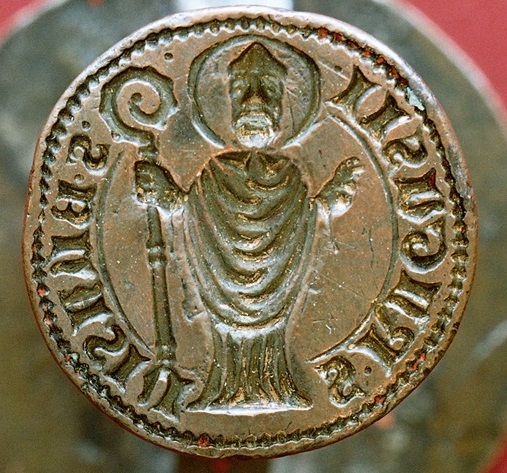Anselmi, Sergio, Venezia, Ragusa, Ancona tra Cinque e Seicento: un momento della storia mercantile del Medio Adriatico (Ancona, 1969).
Anselmi, Sergio, “Le relazioni economiche tra Ragusa e lo Stato Pontificio: uno schema di lungo periodo,” Nuova Rivista Storica 60 (1976): 521–534.
Anselmi, Sergio, “Motivazioni economiche della neutralità di Ragusa nel Cinquecento,” in Ragusa (Dubrovnik): Una repubblica adriatica. Saggi di storia economica e finanziaria, ed. Antonio Di Vittorio, Sergio Anselmi and Paola Pierucci (Torino, 1994): 25–55.
Biegman, Nicolaas H., “Ragusan Spying for the Ottoman Empire,” Belleten 106 (1963): 237– 255.
Biegman, Nicolaas H., The Turco-Ragusan Relationship (The Hague and Paris, 1967).
Bojović, Boško I., Raguse (Dubrovnik) et l’Empire ottoman (1430–1520) (Paris, 1998).
Castaño, Emilio Sola, “Ragusa y la literatura de avisos,” in Tajna diplomacija u Dubrovniku u XVI stoljeću, ed. Mirjana Polić-Bobić (Zagreb, 2011), 164–180.
Dujčev, Ivan, ed., Avvisi di Ragusa. Documenti sull’Impero turco nel sec. XVII e sulla guerra di Candia (Rome, 1935).
Glavina, Mladen, “An Overview of the Formation and Functioning of the Institute of Capitulations in the Ottoman Empire and the 1604 Dubrovnik Capitulation,” Prilozi za orientalnu filologiju 58 (2008): 139–166.
Harris, Robin, Dubrovnik. A History (London, 2003).
Janeković-Römer, Zdenka, The Frame of Freedom: The Nobility of Dubrovnik between the Middle Ages and Humanism (Zagreb and Dubrovnik, 2015).
Kunčević, Lovro, “Janus-faced Sovereignty: The International Status of the Ragusan Republic in the Early Modern Period,” in The European Tributary States of the Ottoman Empire in the Sixteenth and Seventeenth Centuries, ed. Gábor Kármán and Lovro Kunčević (Leiden, 2013), 91–121.
Kunčević, Lovro, “The Rhetoric of the Frontier of Christendom in the Diplomacy of Renaissance Ragusa (Dubrovnik),” Dubrovnik Annals 17 (2013): 37–68.
Kunčević, Lovro, “The Maritime Trading Network of Ragusa (Dubrovnik) from the Fourteenth to the Sixteenth Century,” in The Routledge Handbook of Maritime Trade around Europe, 1300–1600, ed. Wim Blockmans, Mikhail Krom and Justyna Wubs-Mrozewicz (New York, 2017), 141–158.
Kunčević, Lovro, “Political Decision-making in the Republic of Ragusa (Dubrovnik) in the Fourteenth and Fifteenth Centuries,” in Cultures of Voting in Pre-modern Europe, ed. Serena Ferente, Lovro Kunčević and Miles Pattenden (New York and London, 2018), 225–241.
Lonza, Nella, “Election Procedure in the Republic of Dubrovnik,” Dubrovnik Annals 8 (2004): 7–41.
Miović, Vesna, “Dragomano nostro della Porta: Dragomans of the Porte in the Service of Dubrovnik in the Fifteenth and Sixteenth Centuries,” Dubrovnik Annals 24 (2020): 65–95.
Molnár, Antal, Le Saint-Siège, Raguse et les missions catholiques de la Hongrie Ottomane 1572–1647 (Rome and Budapest, 2007).
Molnár, Antal, Confessionalization on the Frontier. The Balkan Catholics between Roman Reform and Ottoman Reality (Rome, 2019).
Molnár, Antal, “Ragusa and the Beginnings of the Balkan Missions,” Dubrovnik Annals 25 (2021): 89–112.
Moroni, Marco, L’impero di San Biagio: Ragusa e i commerci balcanici dopo la conquista turca (1521–1620) (Bologna, 2011).
Nedeljković, Branislav M., ed., Liber croceus (Beograd, 1997).
Nedeljković, Branislav M., ed., Liber viridis (Beograd, 1984).
Petitjean, Johann, “On His Holiness’ Secret Service: How Ragusa Became an Intelligence Agency after Lepanto,” in Europe and the ‘Ottoman world’: Exchanges and Conflicts (Sixteenth to Seventeenth Centuries), ed. Gábor Kármán and Radu G. Păun (Istanbul, 2013), 83–106.
Rheubottom, David, Age, Marriage, and Politics in Fifteenth-century Ragusa (Oxford, 2000).
Vekarić, Nenad, “The Lastovo Rebels of 1602,” Dubrovnik Annals 10 (2006): 59–86.
Zlatar, Zdenko, Between the Double Eagle and the Crescent: The Republic of Dubrovnik and the Origins of the Eastern Question (Boulder, 1992).
Zlatar, Zdenko, Our Kingdom Come: The Counter-Reformation, the Republic of Dubrovnik, and the Liberation of The Balkan Slavs (Boulder, 1992).
Image: Small seal of the Republic of Ragusa, Dubrovnik, mid-15th century. The photo is the property of Dubrovnik Museums.
